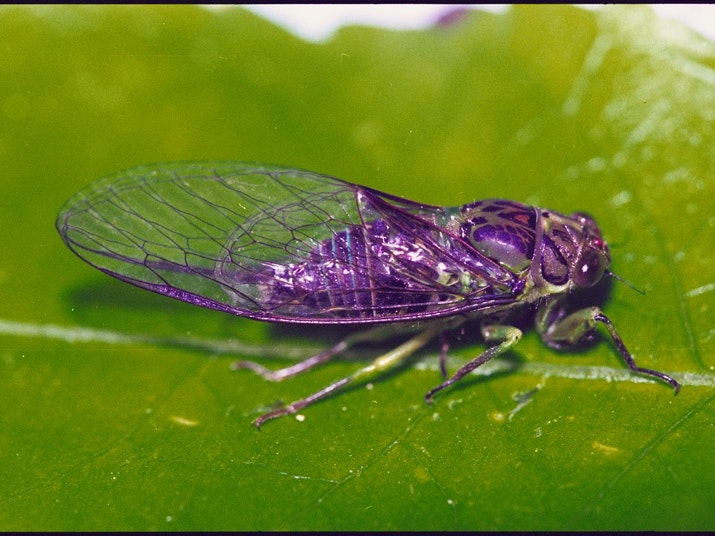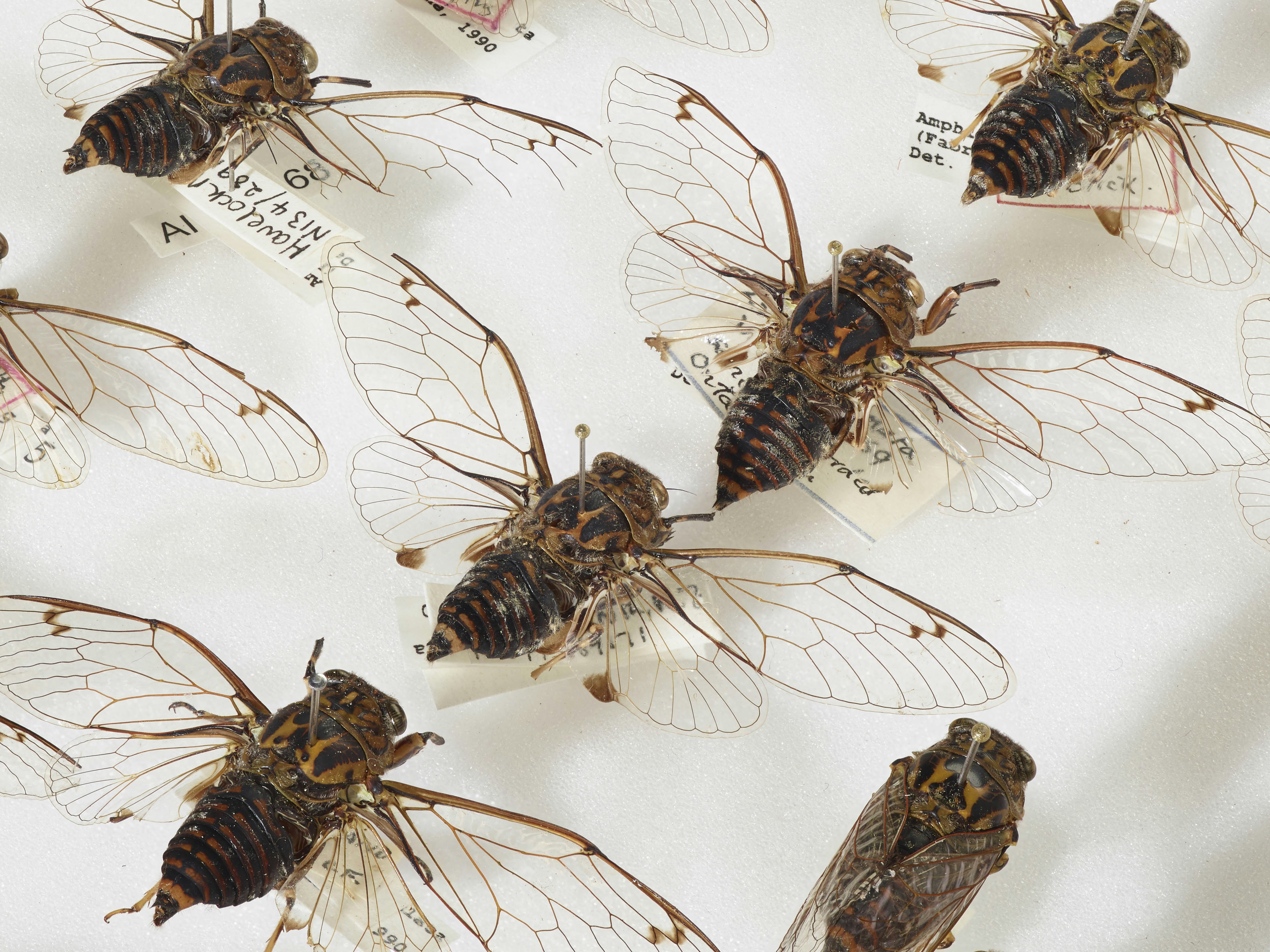Egg stage
The life of a new cicada starts when a female cicada cuts grooves in branches and lays her eggs. When the eggs hatch, the young nymphs drop from the branches and crawl underground to spend the next few years feeding on root sap, until they are ready to become adults.
This close-up shows a branch side-ways which was pruned by a cicada to lay eggs in. Photo by Melvin Esson
Underground stage
Cicadas spend most of their lives in the nymph stage underground feeding on the sap of plant roots. Some species in North America spend 13 or 17 years underground in this nymph stage.
In New Zealand, cicadas typically spend around three years in this stage. After spending years underground, the cicada nymphs emerge from the ground and climb to a high place, for example, the branch of a tree.
A small nymph. Photo by Melvin Esson
Adult stage
After their emergence from the ground, they moult one last time, transforming into adults and leaving behind the cast-off skin. You may have seen the cast-off skin on a tree or an outside wall at the beginning of summer.
After the adults have emerged, the males make a song to attract a female to mate with. After the adults mate, the female makes grooves in branches and lays her eggs.
This cicada is in the process of emerging as an adult from its skin for one last time. Photo by Melvin Esson


